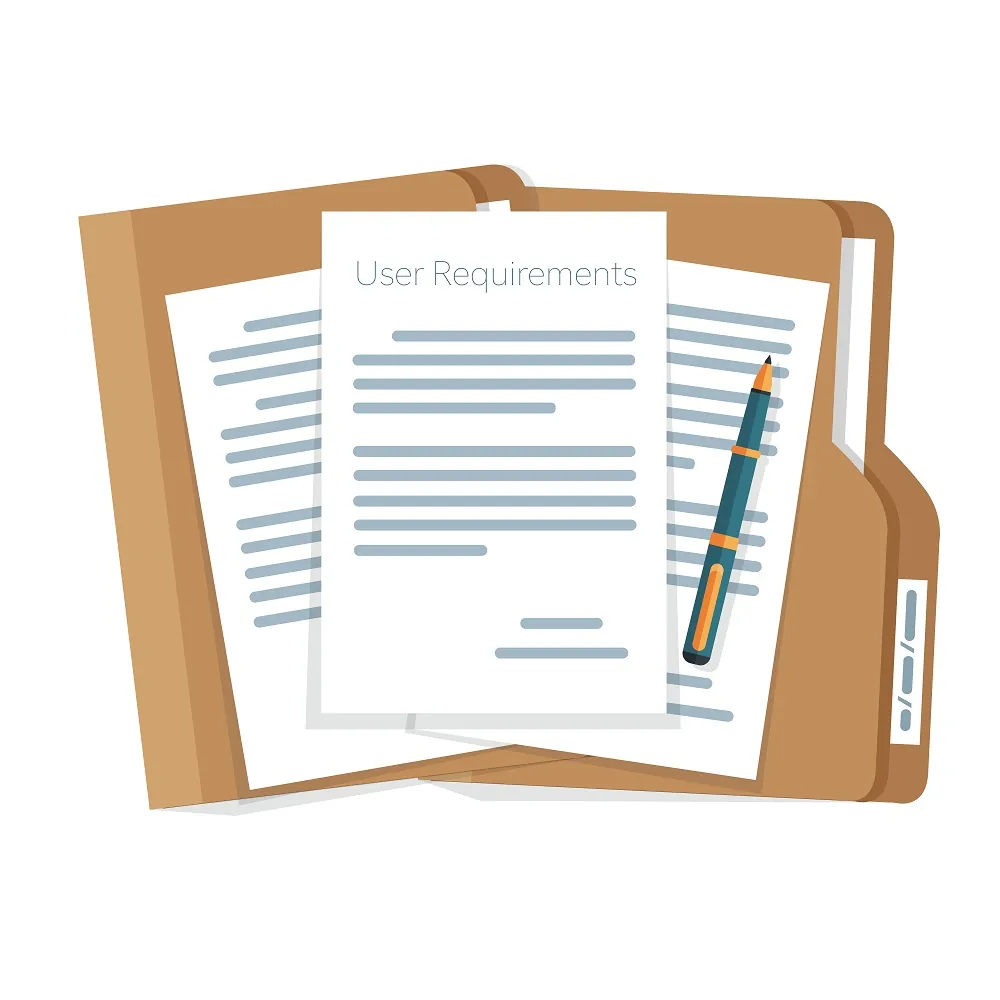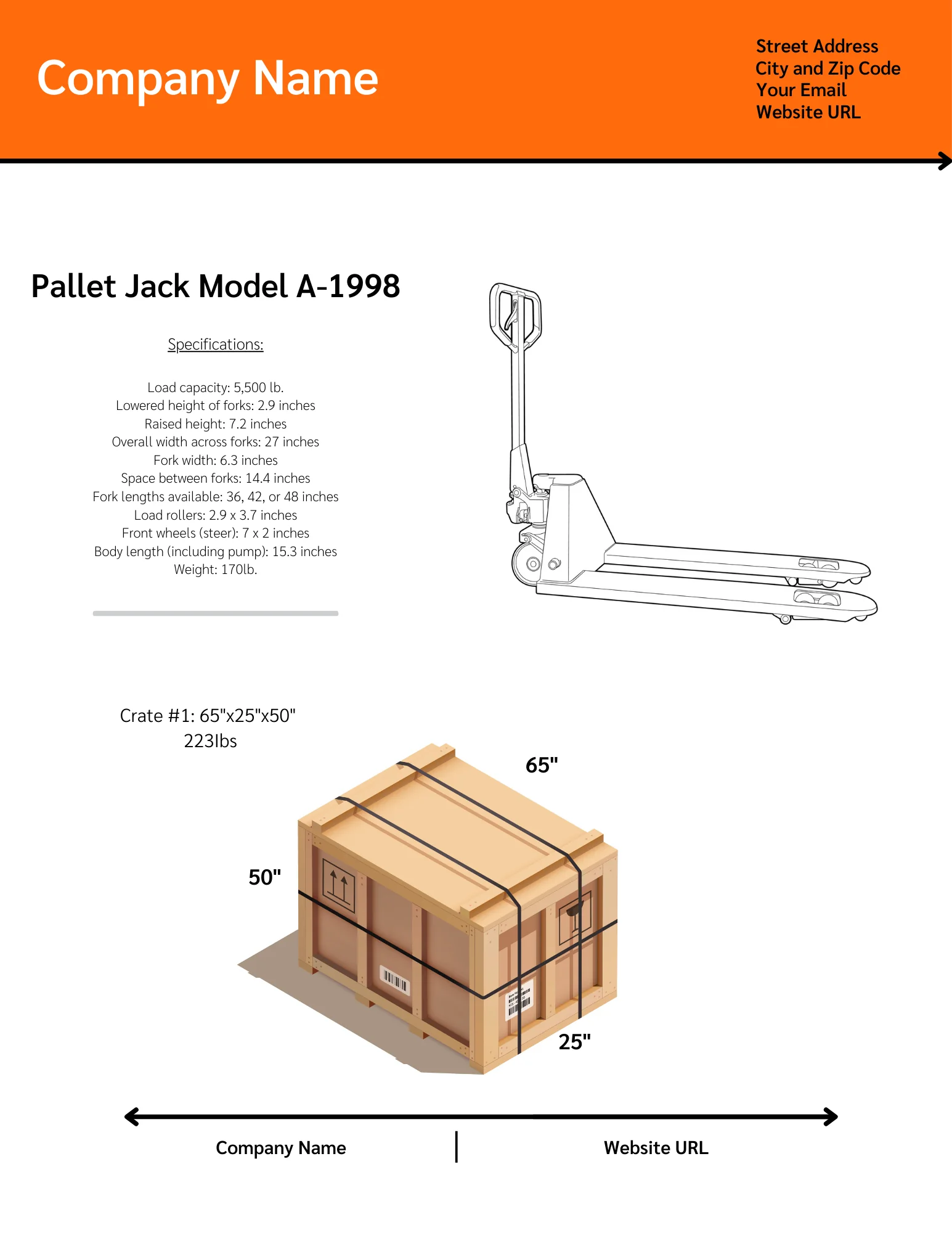
Spec Sheet Guide
Spec sheets provide all the essential details about a product that is being shipped. They include information like dimensions, weight, and packaging requirements.
Adding this document to your shipments helps ensure that goods are handled properly, allows for efficient use of space, minimizes risks and delays, and improves overall communication among all parties involved in the shipment process.
Why Use Spec Sheets?
Product spec sheets provide detailed information so that freight carriers can transport your goods safely and efficiently. They help avoid unexpected charges and complications during the shipping process.
In simple terms, spec sheets are like a roadmap that guides smooth and successful freight shipments.
Benefits of Spec Sheets
- Dispute Resolution: In case of a billing adjustment, businesses can refer to the specification sheet as evidence to support their case and negotiate fair resolutions, ultimately protecting businesses from unjustified fees.
- Cost Control: Accurate freight dimensions, weight, and special handling requirements. This ensures businesses can avoid unnecessary expenses and only pay for the services they genuinely need.
- Customer Satisfaction: Providing accurate and comprehensive specs can build a reputation as a reliable and trustworthy partner to carriers, fostering strong relationships and enhancing the overall customer experience.
Thousands of businesses trust FreightCenter to move their freight faster, smarter, and cheaper! From unbeatable rates to top-notch service, our customers are raving about their shipping success.
See why they keep coming back!
Award-Winning Service, Trusted by Shippers Everywhere!
- 2021, 2017 & 2016 Food Logistics’ Top Green Providers
- 2021 & 2018 Supply & Demand Chain Executives’ Pros to Know: Matthew Brosious
- 2020 & 2019 Top Food Logistics’ 3PL & Cold Storage Provider Award
- 2020 & 2019 Business Observer’s Top 500 Companies on the Gulf Coast
- 2020 & 2017 SmartWay® Transport Partner
- 2020 & 2017 Food Logistics’ Champions: Rock Stars of the Supply Chain
- 2020 Best of Palm Harbor Awards for Local Businesses
- 2017 Green Supply Chain Award from Supply & Demand Chain Executive
- 2017 Tampa Bay Business Journal Heroes at Work
- 2016, 2015, & 2012 Food Logistics Top 100 Software and Technology Providers
- 2013 Tampa Bay Business 100 by Tampa Bay Business Journal
- 2013 Top 100 Great Supply Chain Partners by SupplyChainBrain
- 2012 TIA Samaritan Award Honorable Mention
- 2012, 2011 & 2010 TBBJ Fast 50 Recipient
- 2013, 2011, & 2010 Diversity Business Top Businesses

3 Easy-to-Follow Instructions to Create a Spec Sheet
Mastering the art of building a comprehensive specification sheet will empower you to communicate your shipping requirements effectively and foster a successful partnership with carriers.
1. Item Description: Describe each item being shipped. Include details such as the product name, model number, and unique identifiers. This helps carriers identify and handle your things correctly.
2. Dimensions and Weight: Measure the dimensions of each item accurately. Note the length, width, and height in inches or centimeters. Provide the maximum sizes and shipping measurements (dimensions once packaged).
Record the weight of each item individually using a reliable scale. If your shipment includes multiple items, indicate the total weight of the entire load.
3. Packaging Requirements: Specify the packaging requirements for each item. Indicate if any unique packaging materials, such as foam padding or custom crates, are necessary. Provide instructions on how the items should be packed and secured.
Note: Clearly state the instructions if any items require special handling due to fragility or sensitivity. Include specific labels or markings that carriers should use to identify these items.
Case Example; Spec Sheet Saves the Day!
A customer of FreightCenter ran a furniture-making business from their home workshop, selling on eBay and Etsy. They shipped a dog kennel crate that doubled as an end table to a customer in California, and the shipment was picked up and delivered successfully. However, a few weeks later, the customer was charged an additional fee for increased weight and dimensions.
Upon inspection, the carrier input that the weight was double what was listed on the bill, and the dimensions were significantly larger than stated. This created an extra charge of over $700, which had severe financial implications for our customer’s small business. As a small business, they feared one more hit like this could cause them to close their shop.
Outcome
FreightCenter advised the customer to create a specification sheet detailing the item’s dimensions and weight before and after packaging to prevent future issues. This allowed our disputes department to use the sheet and sales invoice to dispute the billing adjustment with the carrier. As a result, the customer was refunded over $700 instead of being stuck with the extra bill.
It’s essential to be prepared for billing adjustments in the freight industry. Shippers can save time and dispute charges with carriers more efficiently by creating a specification sheet.
Take Control of Your Freight Shipping Process with FreightCenter
Partnering with FreightCenter empowers you to take control of your freight shipping process. By implementing the easy-to-follow instructions provided below, you can create a practical specification sheet that accurately communicates your shipping requirements to carriers.
Need help navigating the complexities of freight shipping. With FreightCenter, you have a trusted partner providing the resources and knowledge needed to ensure a seamless shopping experience.
Accurate spec sheets don’t just streamline shipping—they give you leverage when unexpected charges show up on your invoice. Here’s how your spec sheet can help back you up in a carrier dispute:
If a carrier claims your freight weighed more than reported, your documented weight (especially with scale ticket backup) helps prove your original info was correct—and avoid unnecessary charges.
Overlength fees can be triggered by even a few extra inches. Your spec sheet, paired with photo evidence and measurements, can show the true dimensions of your packaged freight at the time of pickup.
If your shipment gets reclassified by the carrier, your original spec sheet helps justify the class you quoted based on NMFC guidelines. It shows your dimensions, weight, packaging, and commodity type were aligned with the class submitted.
Carriers often reclassify freight due to low density. Your spec sheet (especially when including accurate weight and dimensions) helps recalculate true density—and supports your case if the carrier’s adjusted class inflates the rate unfairly.

Spec Sheet Guide – Frequently Asked Questions
Q. What is a freight spec sheet?
A freight spec sheet is a document that lists the key specifications of the freight you’re shipping—such as weight, dimensions, packaging type, and special handling instructions—to help carriers quote, handle, and transport it correctly.
Q. Why do I need a spec sheet for shipping?
Spec sheets ensure accurate freight quotes, proper carrier matching, and a reduced risk of damage or reclassification. They also help you avoid unexpected fees.
Q. What should be included in a shipping spec sheet?
Include the item name, dimensions (L×W×H), weight, freight class (if known), packaging type (pallet, crate, box), quantity, special handling instructions, and whether it’s stackable or not. It should be on a document with company letterhead.
Q. How do I measure my freight for the spec sheet?
Use a tape measure or digital measuring tool to get the length, width, and height of the packaged item, including any pallet or crate it’s on. Round up to the nearest inch.
Q. What happens if I enter incorrect information on a spec sheet?
Incorrect dimensions or weight can lead to reclassification charges, delivery delays, or even refusal of the shipment by the carrier.
Q. Can I use my own format for a spec sheet?
Yes, but it’s recommended to use a clear, standardized format.
Q. Do I need a separate spec sheet for each item I’m shipping?
If you’re shipping different types of items with different specs, each item should be listed separately. If it’s multiple units of the same item, you can combine them under one spec.
Q. What is the difference between a BOL and a spec sheet?
A spec sheet provides item details used to generate a quote. A Bill of Lading (BOL) is the legal shipping document issued once your freight is booked.
Q. Do I need to include the freight class in my spec sheet?
If you know the freight class, it helps. If not, FreightCenter’s team can calculate it based on your weight, dimensions, and product type.
Q. Can FreightCenter help me fill out my spec sheet?
Absolutely! Our freight experts can walk you through each part of the spec sheet to ensure it’s complete and accurate before you book a shipment.
Q. Should I include photos with my spec sheet?
Including photos of the packaged freight is optional but highly encouraged, especially for custom, irregular, or fragile items. It helps carriers assess handling needs. If there are no photos, a drawing showing the specifications helps tremendously.
Q. What if my shipment has hazardous materials?
Clearly note it on your spec sheet and include the appropriate hazmat classification and safety data sheet (SDS). FreightCenter will match you with a compliant carrier.
Q. Can I use a spec sheet for international shipping?
Yes. Spec sheets are helpful for both domestic and international shipments that have had their bills adjusted for extra weight or dimensions.
Expert Tips To Create a Spec Sheet

Always Measure and Weigh After Packaging
Don’t measure just the product—measure the fully packaged item, including the pallet, crate, or wrapping. Carriers base pricing and equipment needs on the total shipping footprint, and underestimating by even an inch or pound can trigger reclassification fees.

Use Consistent Units and Rounding
Stick to one unit system (inches/pounds or cm/kilograms) throughout the sheet, and always round up—especially on dimensions. Carriers use dimensional weight calculations, and even a small rounding error can affect your rate and freight class.

Save and Reuse Standard Templates
If you ship similar items frequently, save a digital version of your spec sheet. FreightCenter can help build a reusable template that saves time and ensures consistency for every shipment.


